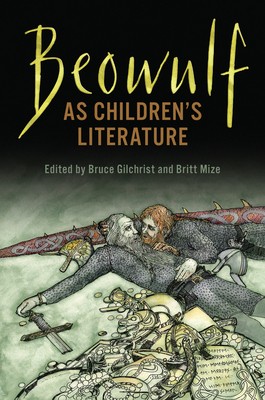
- We will send in 10–14 business days.
- Publisher: University of Toronto Press
- ISBN-10: 1487502702
- ISBN-13: 9781487502706
- Format: 15.2 x 22.9 x 2.2 cm, hardcover
- Language: English
- SAVE -10% with code: EXTRA
Beowulf as Children's Literature (e-book) (used book) | bookbook.eu
Reviews
Description
The single largest category of Beowulf representation and adaptation, outside of direct translation of the poem, is children's literature. Over the past century and a half, more than 150 new versions of Beowulf directed to child and teen audiences have appeared, in English and in many other languages. In this collection of original essays, Bruce Gilchrist and Britt Mize examine the history and processes of remaking Beowulf for young readers.
Inventive in their manipulations of story, tone, and genre, these adaptations require their authors to make countless decisions about what to include, exclude, emphasize, de-emphasize, and adjust. This volume considers the many forms of children's literature, focusing primarily on picture books, illustrated storybooks, and youth novels, but taking account also of curricular aids, illustrated full translations of the poem, and songs. Contributors address issues of gender, historical context, war and violence, techniques of narration, education, and nationalism, investigating both the historical and theoretical dimensions of bringing Beowulf to child audiences.
EXTRA 10 % discount with code: EXTRA
The promotion ends in 13d.22:46:33
The discount code is valid when purchasing from 10 €. Discounts do not stack.
- Publisher: University of Toronto Press
- ISBN-10: 1487502702
- ISBN-13: 9781487502706
- Format: 15.2 x 22.9 x 2.2 cm, hardcover
- Language: English English
The single largest category of Beowulf representation and adaptation, outside of direct translation of the poem, is children's literature. Over the past century and a half, more than 150 new versions of Beowulf directed to child and teen audiences have appeared, in English and in many other languages. In this collection of original essays, Bruce Gilchrist and Britt Mize examine the history and processes of remaking Beowulf for young readers.
Inventive in their manipulations of story, tone, and genre, these adaptations require their authors to make countless decisions about what to include, exclude, emphasize, de-emphasize, and adjust. This volume considers the many forms of children's literature, focusing primarily on picture books, illustrated storybooks, and youth novels, but taking account also of curricular aids, illustrated full translations of the poem, and songs. Contributors address issues of gender, historical context, war and violence, techniques of narration, education, and nationalism, investigating both the historical and theoretical dimensions of bringing Beowulf to child audiences.


Reviews